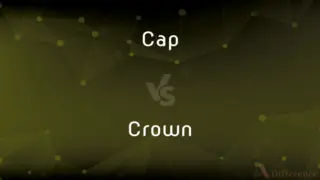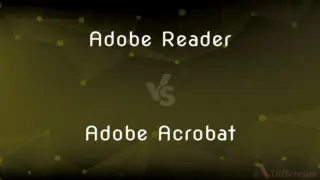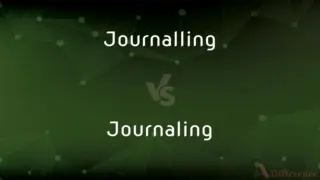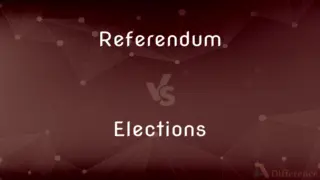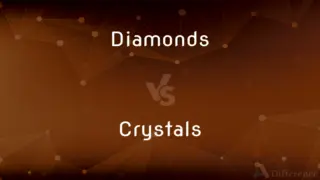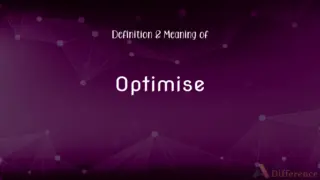E-Commerce vs. M-Commerce — What's the Difference?
By Tayyaba Rehman — Published on December 4, 2023
E-Commerce involves online transactions via computers, while M-Commerce focuses on transactions through mobile devices.

Difference Between E-Commerce and M-Commerce
Table of Contents
ADVERTISEMENT
Key Differences
E-Commerce, or electronic commerce, signifies the buying and selling of goods and services over the internet, primarily using desktops or laptops. It's a broad concept that encapsulates a vast range of online business activities. On the contrary, M-Commerce, or mobile commerce, is a subset of E-Commerce, emphasizing transactions conducted through mobile devices like smartphones and tablets. This form of commerce is tailored for the on-the-go user, providing convenience in a mobile-centric world.
While E-Commerce platforms often have expansive websites designed for larger screens, M-Commerce platforms lean towards apps or mobile-friendly websites. When users engage with E-Commerce platforms, they often have the luxury of larger displays, enabling detailed product viewing, and perhaps multitasking. M-Commerce platforms, on the other hand, understand the limitations of a smaller screen and aim for seamless, intuitive experiences for quick purchases or browsing.
Payment methods between E-Commerce and M-Commerce also show distinctions. E-Commerce platforms often offer a variety of payment methods, including credit cards, PayPal, and others. M-Commerce, acknowledging the mobile user, may integrate more with mobile payment solutions, like Apple Pay or Google Wallet, ensuring transactions are just a tap away.
Given the growth trajectory of mobile device usage, M-Commerce has seen a significant rise in recent years. People prefer the convenience of shopping anytime, anywhere, directly from their phones. While E-Commerce isn't going anywhere and remains a dominant force, M-Commerce tailors to a demographic seeking instantaneous, efficient, and mobile-first solutions.
Comparison Chart
Primary Device
Computers (Desktops/Laptops)
Mobile devices (Smartphones/Tablets)
ADVERTISEMENT
User Experience
Designed for larger screens
Tailored for smaller screens & on-the-go
Typical Platforms
Websites
Apps or mobile-optimized websites
Payment Methods
Credit cards, PayPal, etc.
Mobile payment solutions (Apple Pay, Google Wallet)
Reach
Global, anyone with internet access
Global, but focused on mobile users
Compare with Definitions
E-Commerce
E-Commerce encompasses online business transactions.
With the rise of E-Commerce, traditional retail has seen a shift in consumer behavior.
M-Commerce
M-Commerce is a subset of E-Commerce tailored for mobile users.
For quick purchases on the move, many prefer M-Commerce platforms.
E-Commerce
E-Commerce can involve goods, services, or digital products.
From clothing to e-books, E-Commerce offers a diverse range of products.
M-Commerce
M-Commerce often focuses on a streamlined, mobile-first experience.
M-Commerce apps are designed with intuitive interfaces for ease of use.
E-Commerce
E-Commerce platforms often provide global accessibility.
E-Commerce sites allow customers from around the world to shop at any hour.
M-Commerce
M-Commerce involves trading products or services via mobile devices.
With the ubiquity of smartphones, M-Commerce has experienced exponential growth.
E-Commerce
E-Commerce is the activity of buying or selling products online.
Many businesses have thrived by expanding their E-Commerce platforms.
M-Commerce
M-Commerce integrates with mobile payment solutions.
Thanks to M-Commerce, buying a product can be as simple as using a fingerprint.
E-Commerce
E-Commerce operates through digital platforms on the internet.
The ease and convenience of E-Commerce has revolutionized shopping habits.
M-Commerce
M-Commerce capitalizes on on-the-go shopping habits.
M-Commerce offers the convenience of shopping during daily commutes or breaks.
E-Commerce
Commerce that is transacted electronically, as over the internet.
M-Commerce
The use of mobile technology in commerce.
E-Commerce
Commercial activity conducted via the Internet.
E-Commerce
2005|year=2006|publisher=Apress|page=xxi|pageurl=https://books.google.com/books?id=4ShE_7yml28C&pg=PR21&dq=%22e-commerce%22+web&hl=&cd=20&source=gbs_api#v=onepage&q=%22e-commerce%22%20web&f=false|isbn=978-1-4302-0079-6|passage=The last thing you need to do before launching the e-commerce site is enable credit card processing.}}
Common Curiosities
How does M-Commerce differ from E-Commerce?
While E-Commerce pertains to all online transactions, M-Commerce specifically refers to those conducted via mobile devices.
What does E-Commerce stand for?
E-Commerce stands for "electronic commerce," denoting online buying and selling.
Is M-Commerce a type of E-Commerce?
Yes, M-Commerce is a subset of E-Commerce focused on mobile device transactions.
Are payment methods different between E-Commerce and M-Commerce?
They can overlap, but M-Commerce often integrates more with mobile-specific payment solutions.
Can a business have both E-Commerce and M-Commerce platforms?
Absolutely, many businesses offer both to cater to a wider range of customers.
Do E-Commerce and M-Commerce have different security measures?
Both prioritize security, but M-Commerce may incorporate mobile-specific features like biometric authentication.
How do customer reviews impact E-Commerce and M-Commerce?
Reviews play a crucial role in both, influencing purchasing decisions and trustworthiness.
Which is more popular: E-Commerce or M-Commerce?
While E-Commerce is broader, M-Commerce has seen rapid growth due to increasing mobile device usage.
Can an E-Commerce website be accessed on mobile?
Yes, but for optimal mobile experience, many businesses also offer M-Commerce apps or mobile-optimized sites.
Are return policies different in E-Commerce and M-Commerce?
Return policies depend on the seller, not the platform. Both E-Commerce and M-Commerce can have similar return policies.
Why has M-Commerce gained prominence recently?
The ubiquity of smartphones and the convenience of shopping on-the-go have propelled M-Commerce.
How do E-Commerce and M-Commerce impact traditional retail?
Both have shifted consumer behavior towards online shopping, impacting footfall in traditional retail stores.
Can E-Commerce and M-Commerce coexist for a business?
Absolutely. Many successful businesses utilize both to reach different segments of their audience.
Do E-Commerce and M-Commerce platforms always require internet access?
Typically, yes. To browse and make transactions, users need internet connectivity.
Which provides a broader product range: E-Commerce or M-Commerce?
Both can offer a wide range, but E-Commerce sites, given their larger interface, might display more products simultaneously.
Share Your Discovery
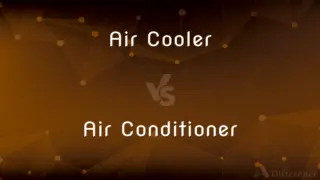
Previous Comparison
Air Cooler vs. Air Conditioner
Next Comparison
Seasonal Unemployment vs. Disguised UnemploymentAuthor Spotlight
Written by
Tayyaba RehmanTayyaba Rehman is a distinguished writer, currently serving as a primary contributor to askdifference.com. As a researcher in semantics and etymology, Tayyaba's passion for the complexity of languages and their distinctions has found a perfect home on the platform. Tayyaba delves into the intricacies of language, distinguishing between commonly confused words and phrases, thereby providing clarity for readers worldwide.
















